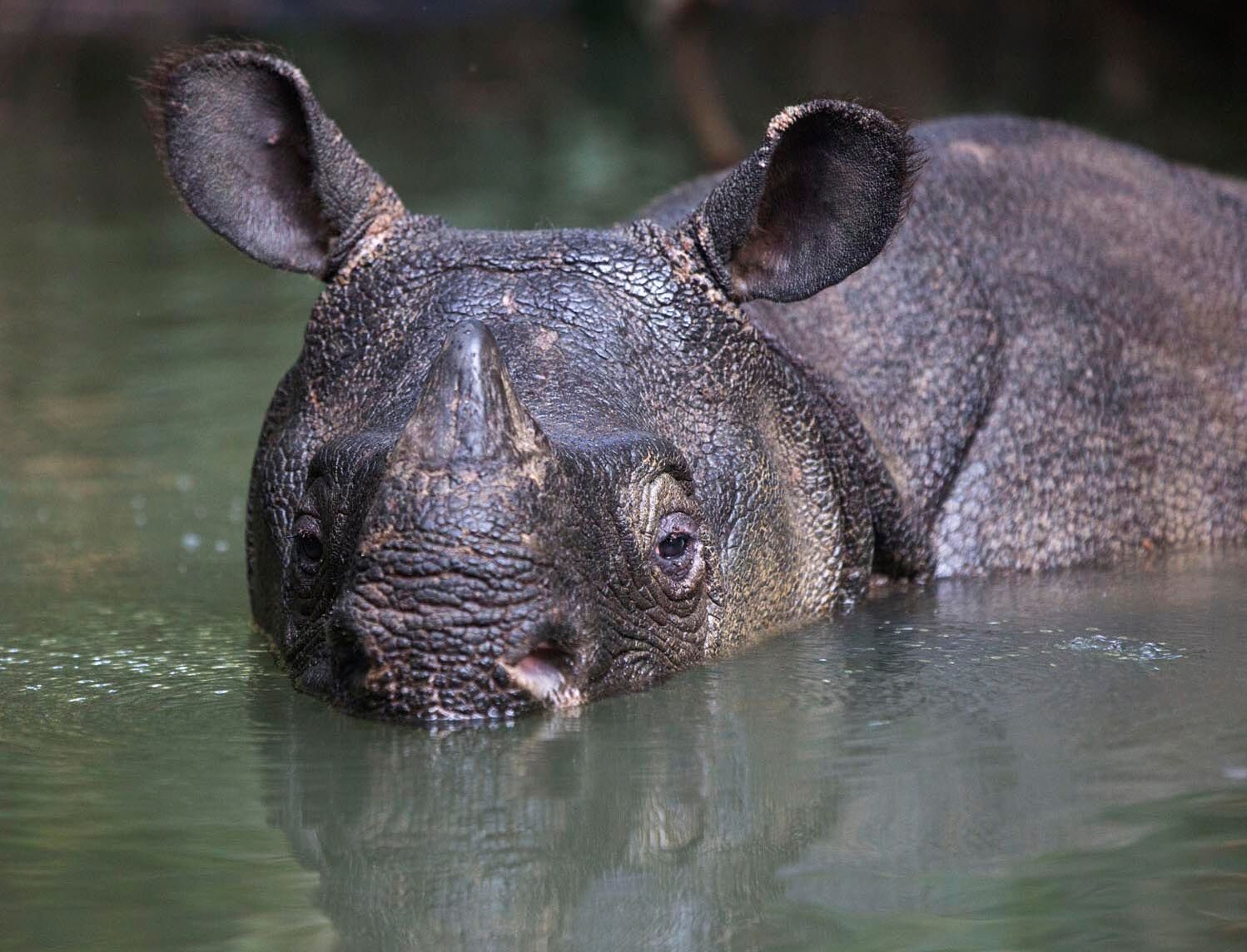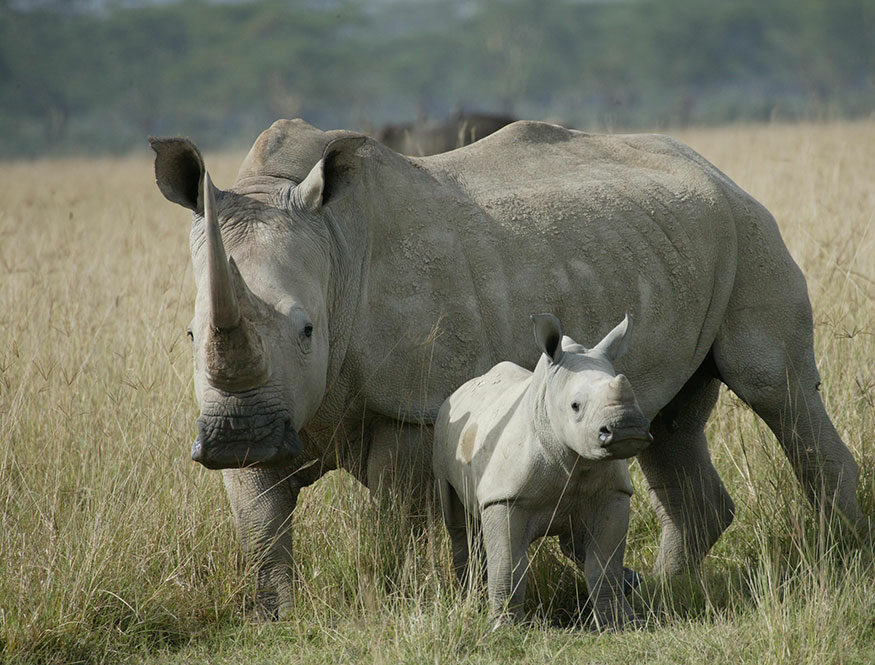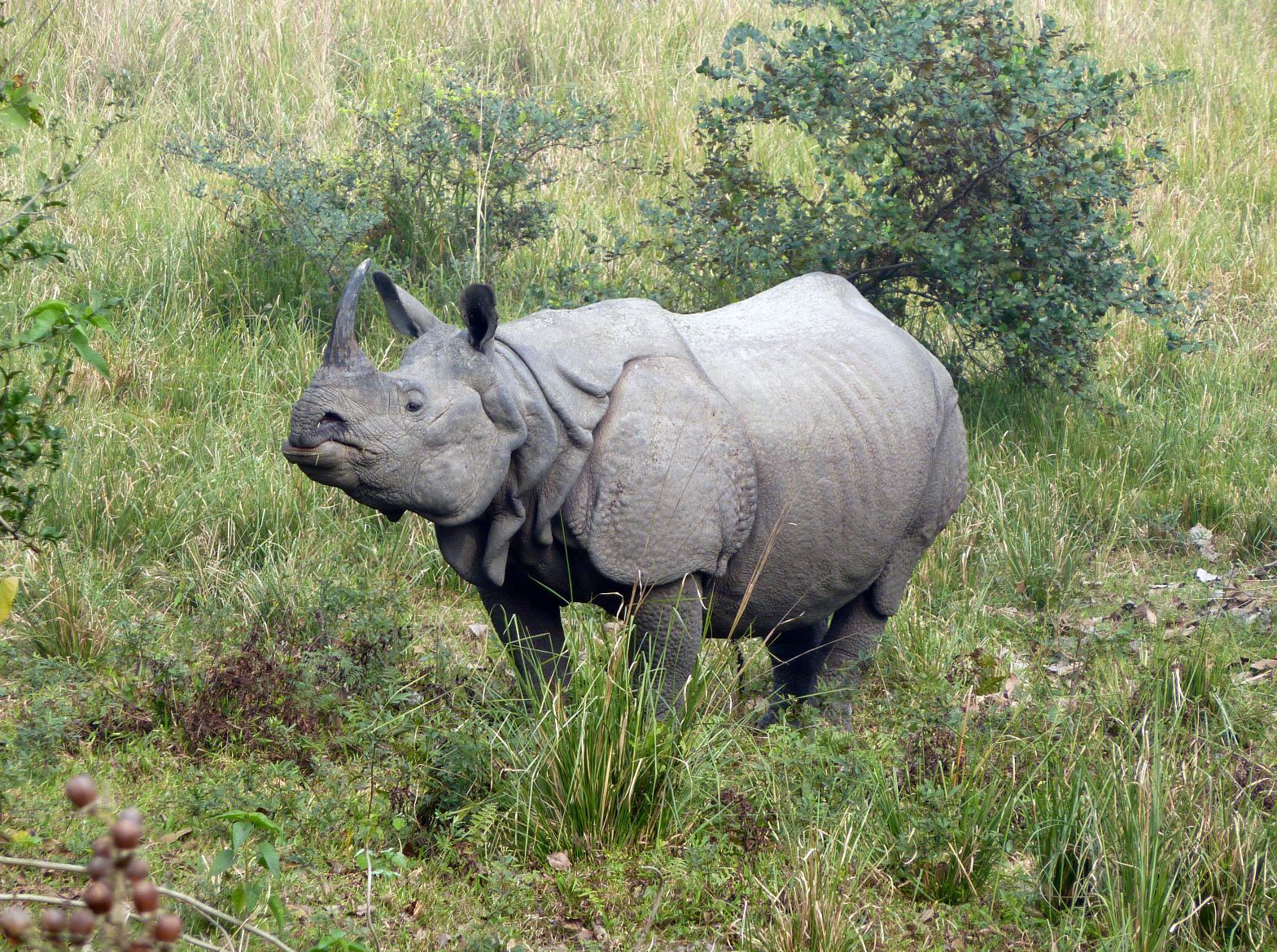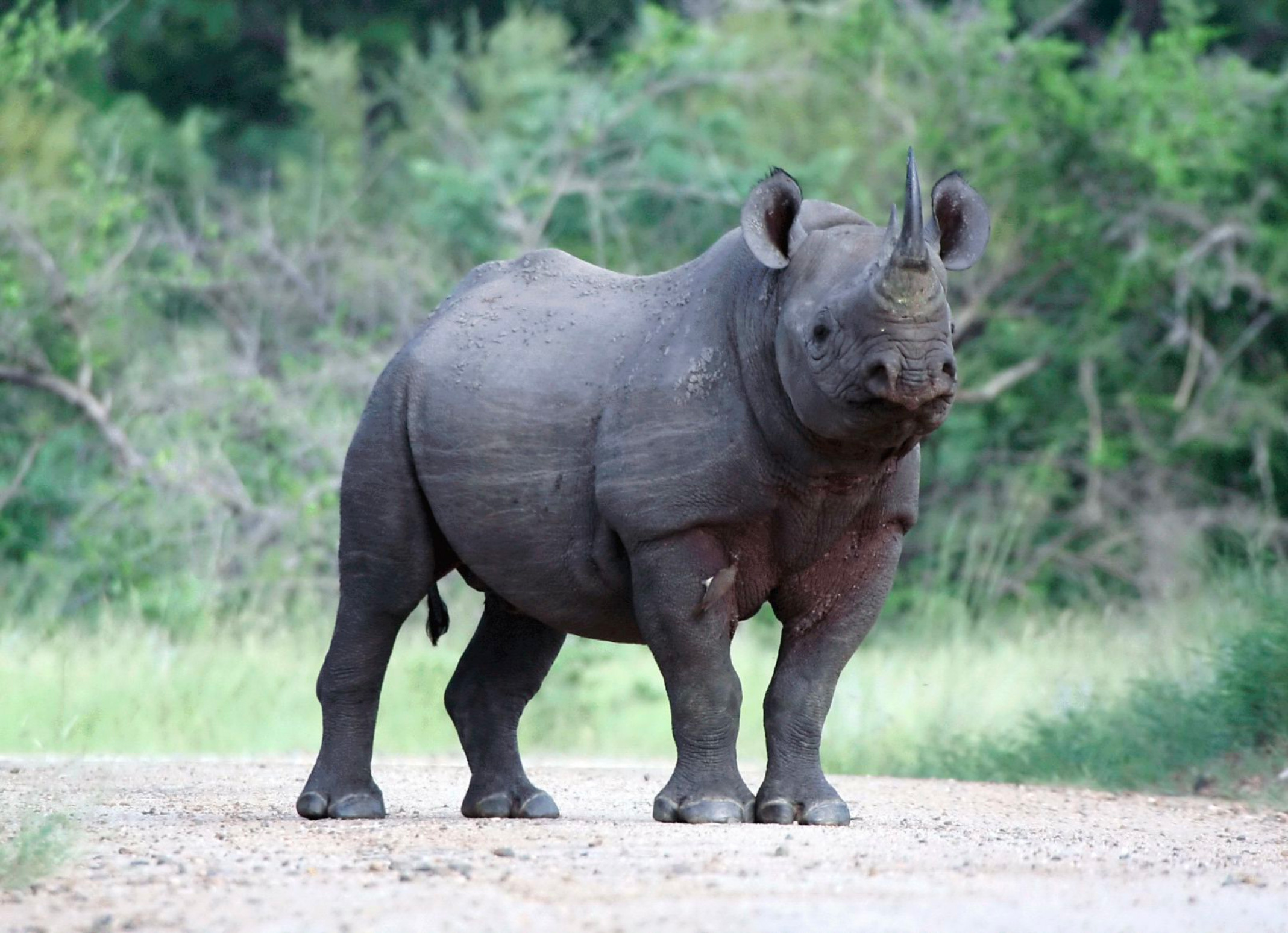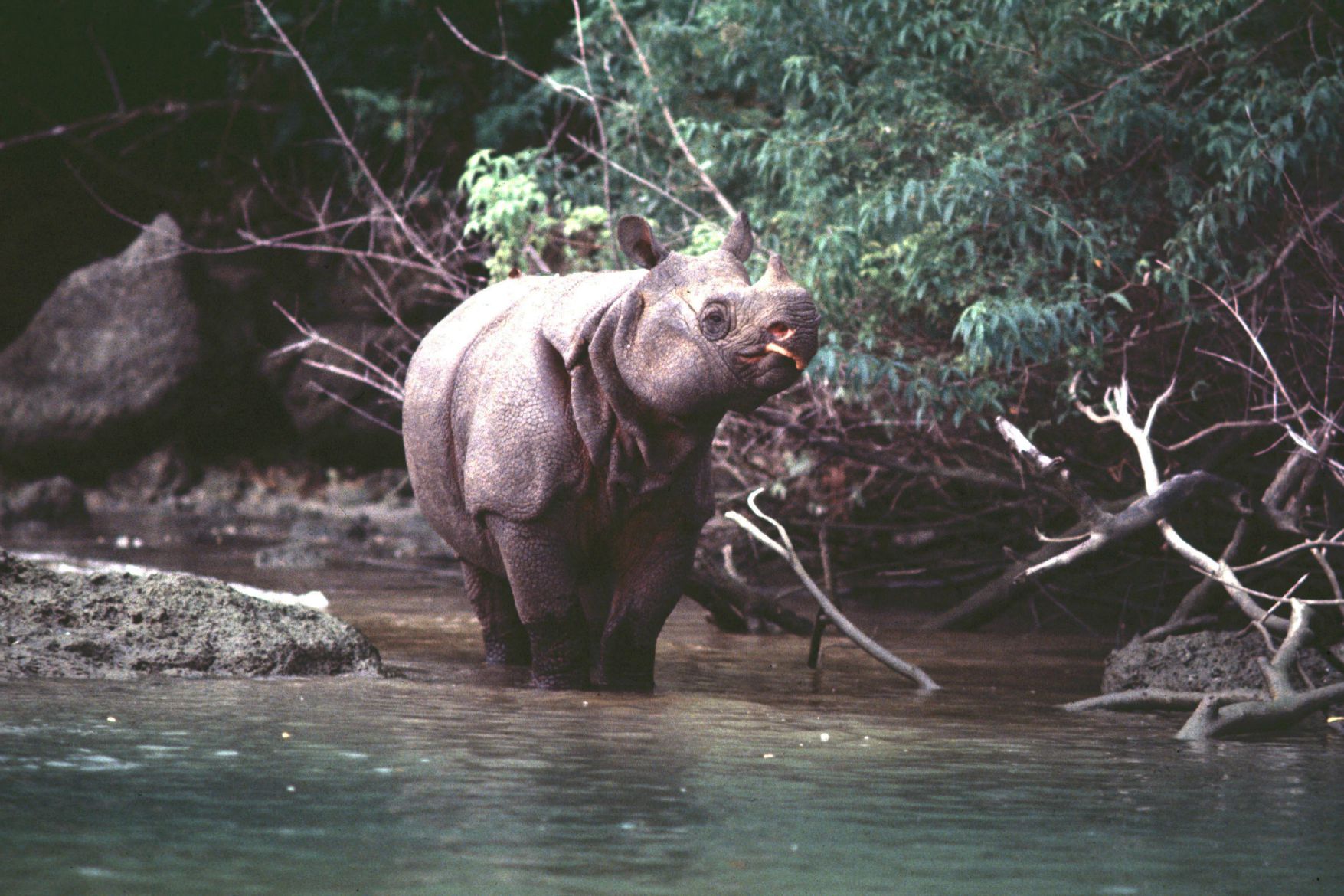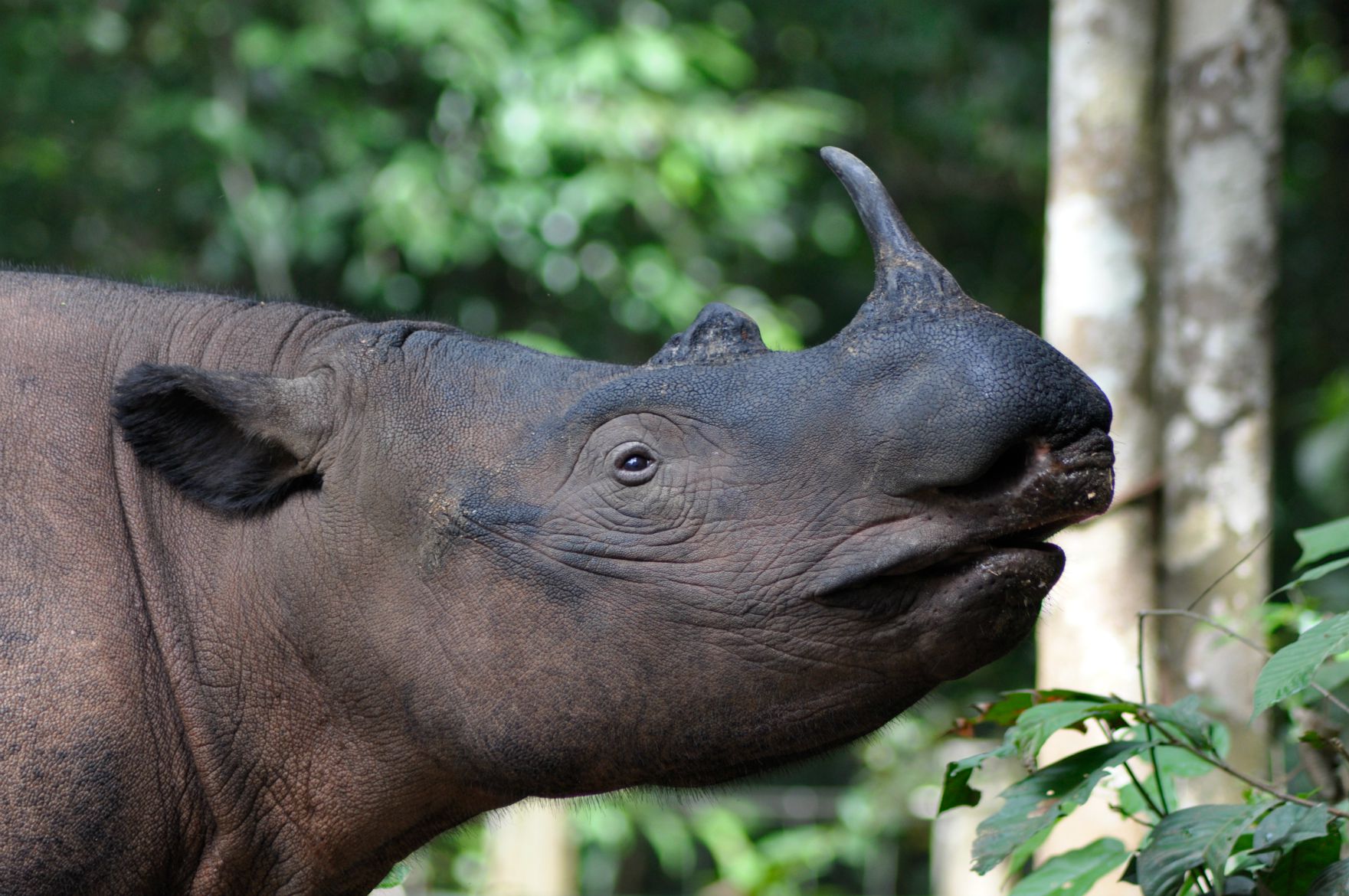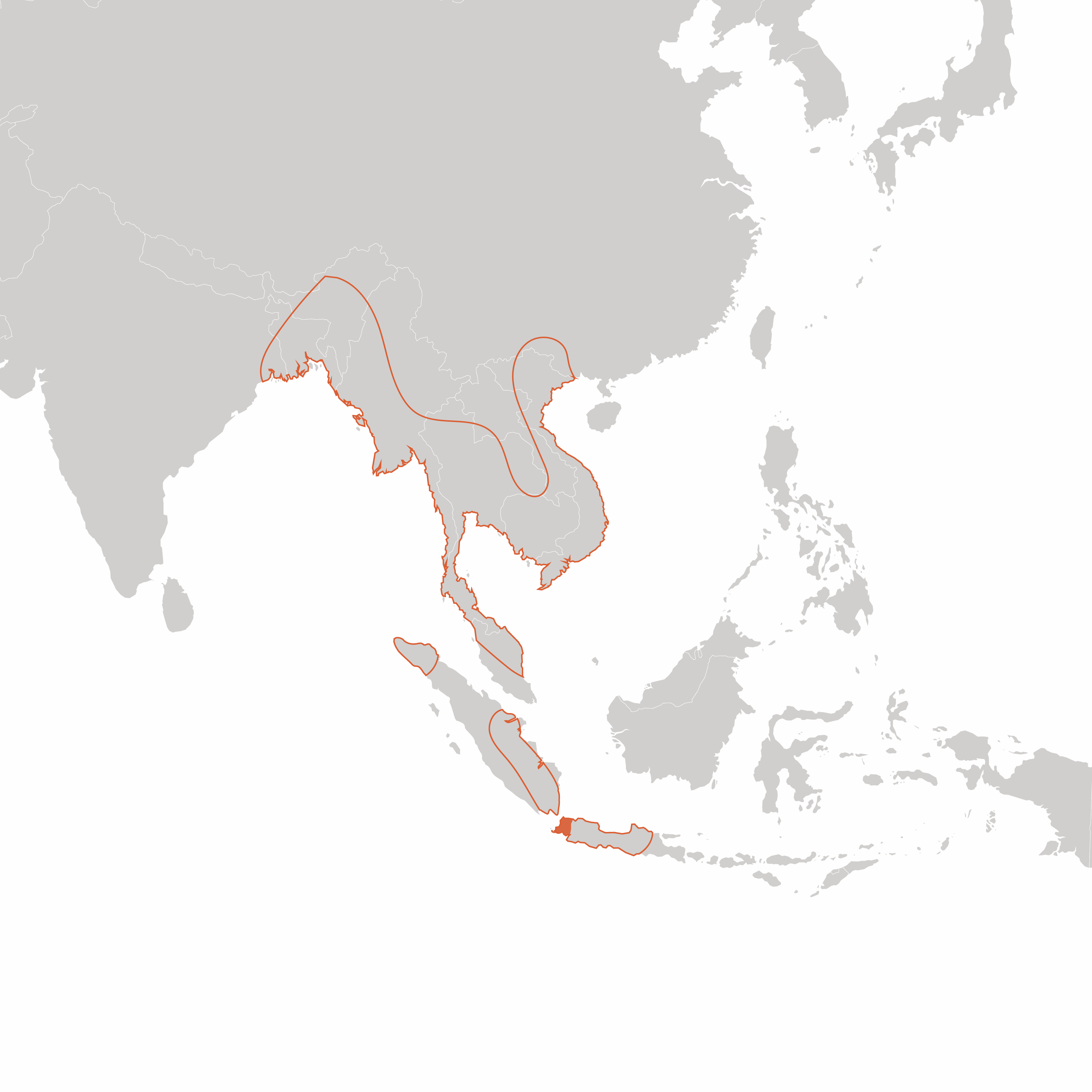The Rhino Family
Javan rhino
(Rhinoceros sondaicus)
Since the 2011 death of the last Javan rhino (Rhinoceros sondaicus) in Vietnam, the species now only exists in one country, in one national park – Indonesia’s Ujung Kulon National Park (UKNP). Once ranging throughout southeast Asia, Javan rhinos have been hunted to near extinction with a single, small population remaining. UKNP has conducted intensive Javan rhino population monitoring since 1967, when the Park estimated that just 25 individuals remained. Since then, the population has been slowly increasing to an estimated high of 76 rhinos in 2022. Unfortunately, earlier this year Indonesia’s Ministry of Environment and Forestry noted that 15 of these 76 individuals have not been identified on camera traps for the last three years (recently, three of these individuals have been accounted for). It is not known whether these rhinos have simply avoided detection by camera traps, passed away naturally or been poached. Within the last year, UKNP has found evidence of attempted poaching incursions and has responded by closing the Park to visitors, increasing protection and monitoring efforts and implementing added security systems. In addition to the constant threat of poaching shared by all rhino species, the Javan rhino population in Ujung Kulon faces several unique threats. These include an unbalanced sex ratio of about two males for every one female, a lack of genetic diversity within the existing population, and only having access to a single habitat which has neared its carrying capacity for rhinos and is located in an area prone to natural disasters.
IUCN Red List Status: Critically Endangered & Population Stable
Facts
Biology
- The Javan Rhino is found only in Indonesia’s Ujung Kulon National Park in west Java.
- Javan rhinos appear to be more adaptable feeders than other rhino species: in the tropical rain forest where the species now survives, it is a pure browser, but it possibly was a mixed feeder (both browse and grass) in other parts of its historic range. Biologists have identified more than 300 different species that comprise their diet.
- Longevity is unknown, but Javan rhinos probably live to 30-40 years.
- Gestation is unknown but is presumed to be approximately 15-16 months, as in other rhinos. Inter-birth intervals are unknown, but mothers probably give birth to one calf approximately every 2-3 years.
- Javan rhinos are solitary in nature and are rarely seen.
- Females do not appear to have prominent horns.
Common Names
Javan rhinoceros
Asian lesser one-horned rhinoceros because of the Javan’s smaller size.
Scientific Name and Origin
Rhinoceros sondaicus
“Rhinoceros” from the Greek “rhino”, meaning “nose” and “ceros”, meaning “horn” and “sondaicus” (Latin -icus indicates a locality) referring to the Sunda islands in Indonesia, “Sunda” meaning “Java”
Current Javan Rhino Numbers and Distribution
Currently there are about 76 Javan rhinos surviving in just one country, Indonesia.
Physical Characteristics
SIZE
Weight: 2,000 – 5,060 pounds (900 – 2,300 kg)
Height: 5 – 5.5 feet (1.5 – 1.7 m) tall at the shoulder
Length: 6 – 11.5 feet (2.0 – 4.0 m)
HORN
Javan rhinos possess a single horn 10 in (25 cm) long, at least in males; females have a smaller or no horn.
Other Features
Gray, hairless, skin folds look like armor plates.

